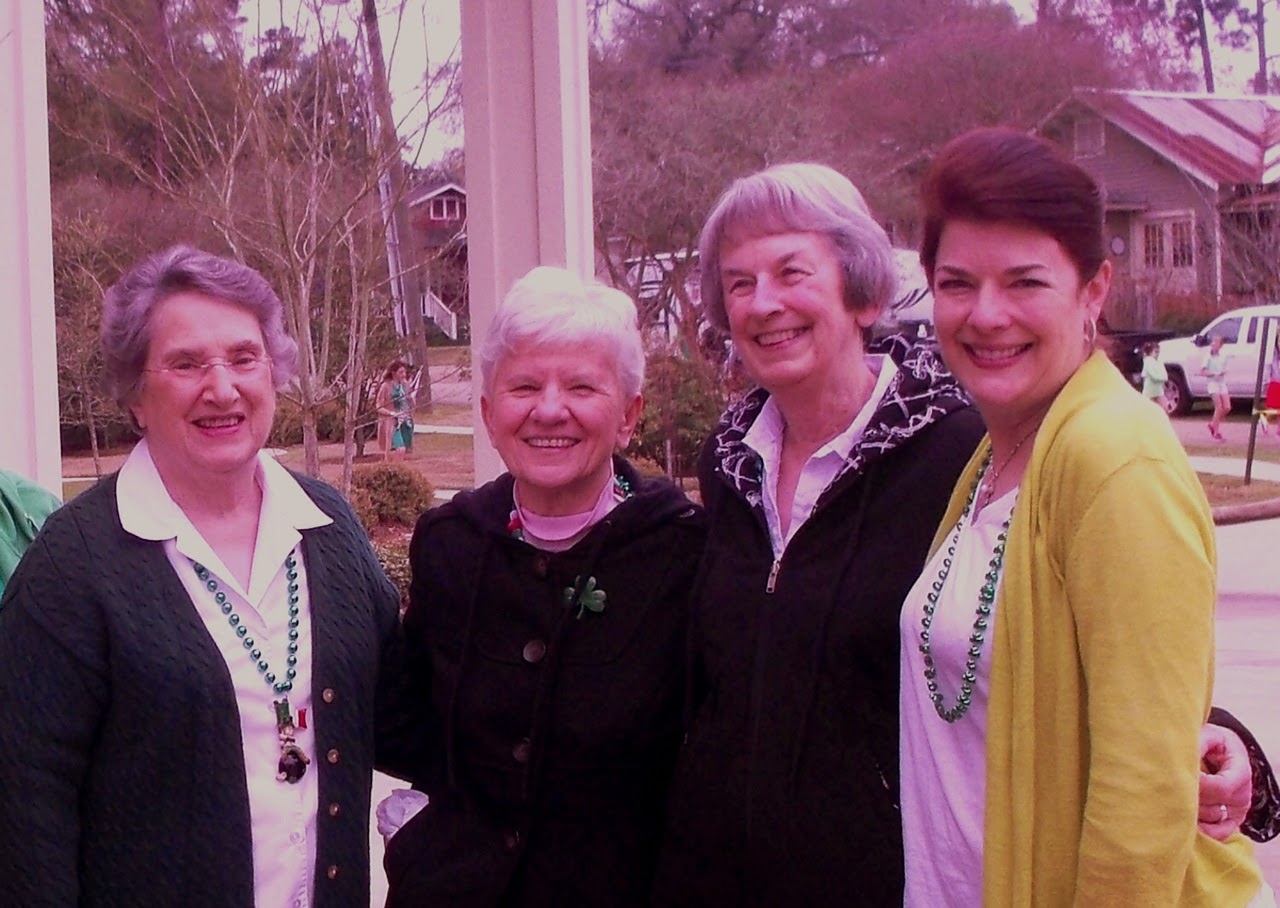

After a morning of Irish American fun, we sojourned to the home of a local family of Sicilian descent, via New Orleans, for an authentic, south Louisiana, St. Joseph's Day altar. The friends of my aunt graciously welcomed me into their home as if I were a family member. A local priest provided a beautiful blessing of the altar, the cooks, and all gathered there, reminding us of the baptismal vows that united us with Christ. Fava beans, prayer cards, and medals were distributed and the feast began.
The tradition began in Sicily after the country was overcome by drought and famine. The Sicilians prayed to their patron saint, San Giuseppe or St. Joseph, to intercede and relieve them. When the famine abated, the people hosted feasts in celebration and prayed and offered thanks to St. Joseph for his intercession. The tradition has evolved into people often asking for St. Joseph to intercede for them for special requests, and offering thanks (in the form of an altar and feast) in his honor. Often
tableaus of the Holy Family are presented and children depict the members of the Holy Family.
There are a multitude of symbols on the St. Joseph's altar. I will explain just three. From www.catholicculture.org - "The myth of the fava bean began during the famine in Sicily, where the bean was used as fodder for cattle. To survive, the farmers prepared them for the table. Hence, they considered themselves lucky to have them. The bean is also a symbol of fertility since it grows well even in poor, rocky soil. Italians would carry a bean from a good crop to ensure a good crop the following year. The blessed dried beans are distributed on the altars along with a piece of blessed bread." Everyone is encouraged to take one or a few. I brought several to share with a couple of friends. Another favorite symbol is the cracker crumbs, mudrica, to place on the Pasta Milanese. The crumbs represent the sawdust in St. Joseph's work place, and his humble beginnings as a
carpenter. I love the symbolism of St. Joseph, the man, and how he used his hands to build each day. The same hands surely stroked the baby Jesus, his earthly son. Finally, the symbol of St. Lucy's eyes is often present. Santa Lucia, the patron saint of the blind, is an important saint in Italy. Her eyes are often depicted in bread or pie on the beautifully adorned altar.
Today's altar was replete with beautiful breads, baked goods, produce, wine,
flowers, and statues. The many hot foods were served on another table:
minestrone, bruschetta, stuffed shells, pasta Milanese with mudrico,
stuffed artichokes, cod fish, fried eggplant (the best I have ever had!), latkes, artichoke
casserole, spinach, and assorted antipasti to name but a few of the dishes. The
baked goods included traditional fig and almond cookies, pignolias, sesame
cookies, cannolis, Italian wedding cookies, Italian bread, sesame bread
and the list goes on.
Especially nice is the bag pressed into your hand as you prepare to leave,
You can't leave without taking a bag of wonderful Italian cookies with you.
All strangers who come are fed, and donations are offered to the poor, along with
the left over food. The beautiful Italian hospitality is overwhelming.
Here are two websites with lots of information about the traditions:
Brucciloni Recipe
This recipe is NOT normally found on a St. Joseph's altar since they are
traditionally meatless. However, this is a favorite family recipe of mine that
came from my Meremaw. She was born and raised in New Orleans and
this recipe was handed down through my mom. It is not a quick recipe to
this recipe was handed down through my mom. It is not a quick recipe to
make but is delicious and truly a labor of love. There are as many spellings
of this favorite as there are variations. You can still find it on a few New
Orleans menus, such as Vincent's, off of Carrolton or, Venezia in mid city.
If you go there be sure and stop at Brocato's for gelato or cannolis.
Here is my youngest enjoying Brocato's Enjoy!
1 thin round steak (about 1/1/2 lbs)
2-3 T olive oil
2 cups seasoned Italian bread crumbs
1/2 cup Parmesan cheese
1/2 cup Pecorino Romano
1 cup shredded mozzarella
1 T basil
1 T parsley
1t oregano
salt and pepper to taste
1 onion chopped
1 cup green onions chopped
1 t minced garlic
2 hard boiled eggs chopped
blanched or canned plum tomatoes, cut in wedges, 1 cup or less
homemade red gravy
Sauté onions in 1 T olive oil. Add garlic, bread crumbs, Romano and parmesan cheese and stir. Add extra oil if too dry. Add fresh herbs. Remove from heat. Add mozzarella cheese when cooled. Add eggs and mix. Spread on salted and peppered meat. Place tomatoes on top. Roll steak long wise and tie with kitchen twine. Brown in Dutch oven in heated olive oil. Cook in homemade red gravy for several hours over a low heat until tender.
New Orleans red gravy is a dark and slightly spicy red sauce. Similar to a spaghetti sauce but not light like marinara. It should cook slowly over a low heat until thick and dark.




No comments:
Post a Comment